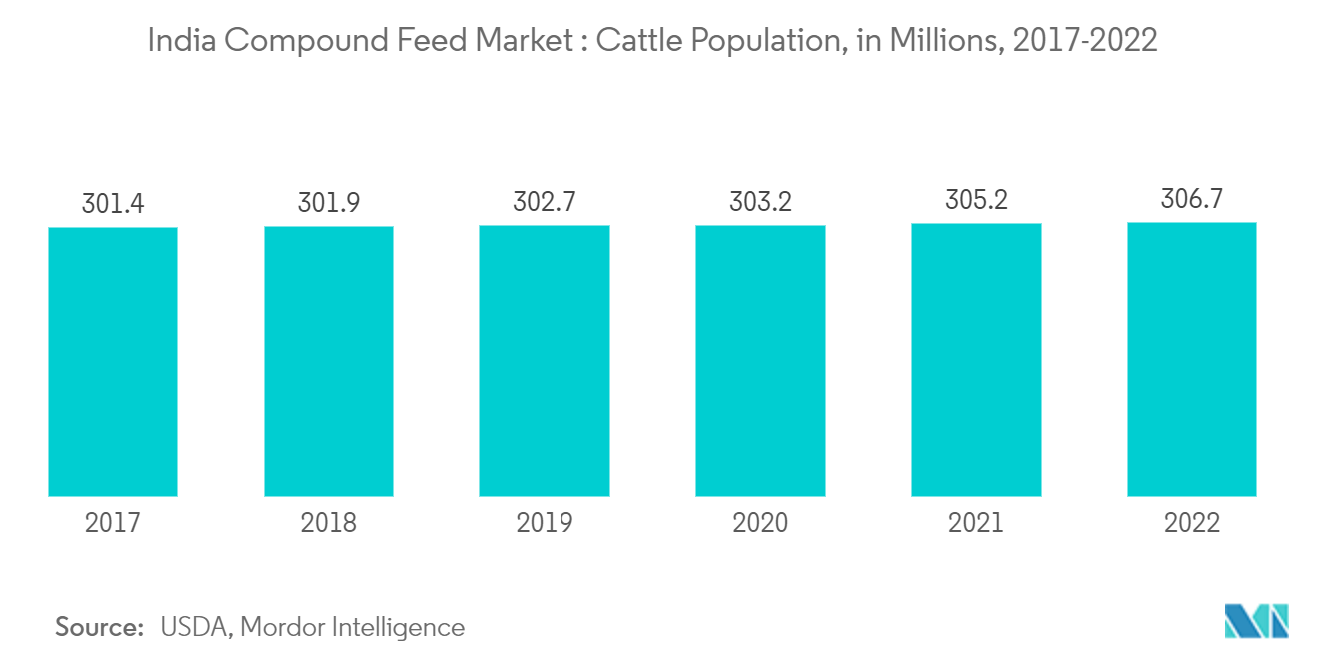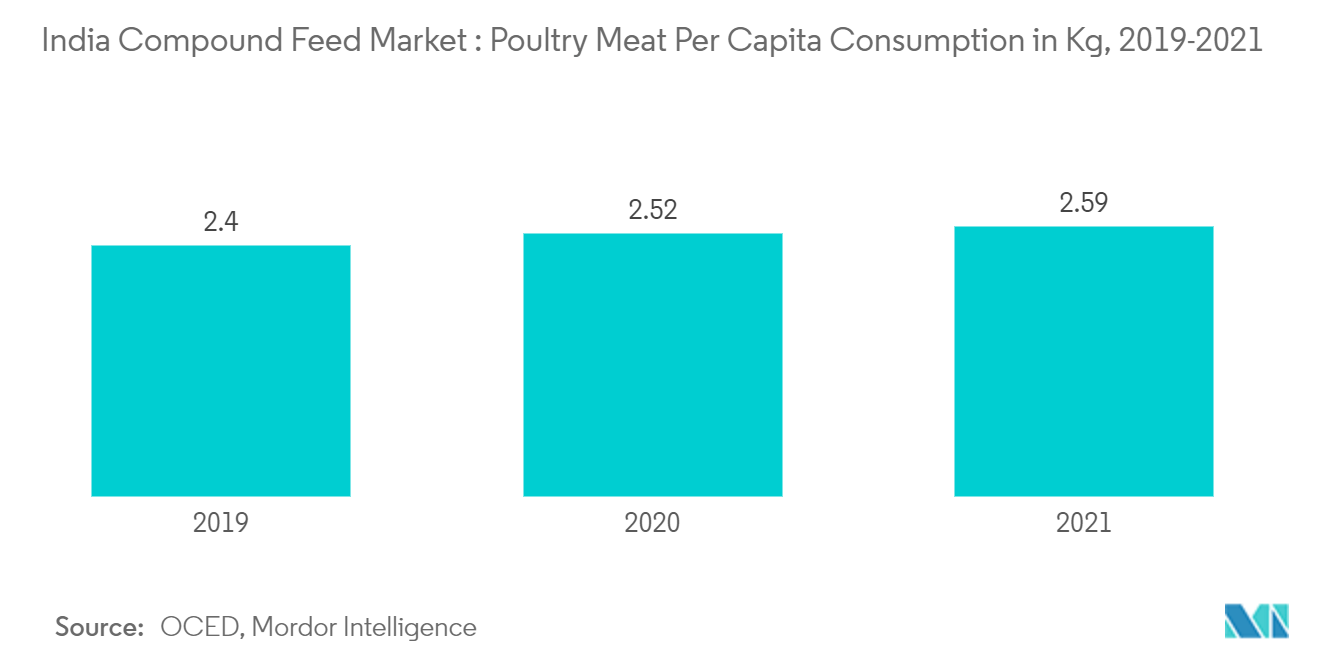Market Trends of India Compound Feed Industry
This section covers the major market trends shaping the India Compound Feed Market according to our research experts:
Rising Consumption of Meat and Dairy Products
In terms of absolute numbers, India has the world's largest live cattle herd, followed by Brazil and China. The national cow herd consists of bovine dairy cattle and Asian domestic water buffalo, both of which contribute significantly to the compound feed market's growth.According to the United States Department of Agriculture, from 2017 to 2022, the cattle population in India has risen from 301.4 million to 306.7 million. The increase is owed to government initiatives that have complemented the cattle industry as well as the compound feed industry's developments.
Since India is most highly dominated by Hindu culture, where bovine animals are sacred, the cattle are reared for their milk. Increased milk consumption in India is enabled by high production quantities. India's per capita milk consumption in 2020 will stand at 406 g/day, already surpassing the global average of 305 g/day. Hence, increasing demand for milk is anticipated to benefit the market for compound feed during the forecast period. Apart from rearing cattle for milk, some parts of India, such as Assam, Kerala, and certain parts of south India, have seen beef consumption gradually increase.
According to a report by the Department of Animal Husbandry and Dairying India, poultry production in India has taken a big leap in the previous four decades, transitioning from traditional agricultural techniques to a commercial production system using cutting-edge technology. According to the 20th Livestock Census, the country's total poultry population is 851.81 million, and egg output is approximately 122.05 billion in 2020-21. During 2020-21, per capita availability will be about 90 eggs per year, and the increasing awareness of the nutritive value of meat and meat products has also been benefiting the poultry market, which is likely to increase demand for compound feed in the poultry sector.

Poultry Feed Segment Dominates the Market
The prices of poultry feed in India tend to stay the same throughout the year. This is because there are more raw materials available and there is more demand on the domestic market. This has led to more organized players entering the poultry feed sector and a higher level of integration.
The affordable availability of chicken meat and the higher availability of eggs in the Indian market are accelerating the growth of the poultry compound feed sector. Despite being the world's third-largest egg producer, India's per capita egg consumption is lower than that of many other developing countries. There is enormous potential for growth in household egg consumption with an improved understanding of its health advantages, creating an opportunity for increased consumption of poultry feed. According to the Organisation for Economic Co-operation and Development (OECD), in 2017, poultry meat consumption was 2.32 kg, which increased to 2.58 kg in 2021.
According to the United States Department of Agriculture, corn and soybean meals made up the majority of poultry feed in the country in 2020. Other coarse grains, such as low-quality wheat and other oilseed meals, were added in small amounts, depending on how much the other meals cost.


